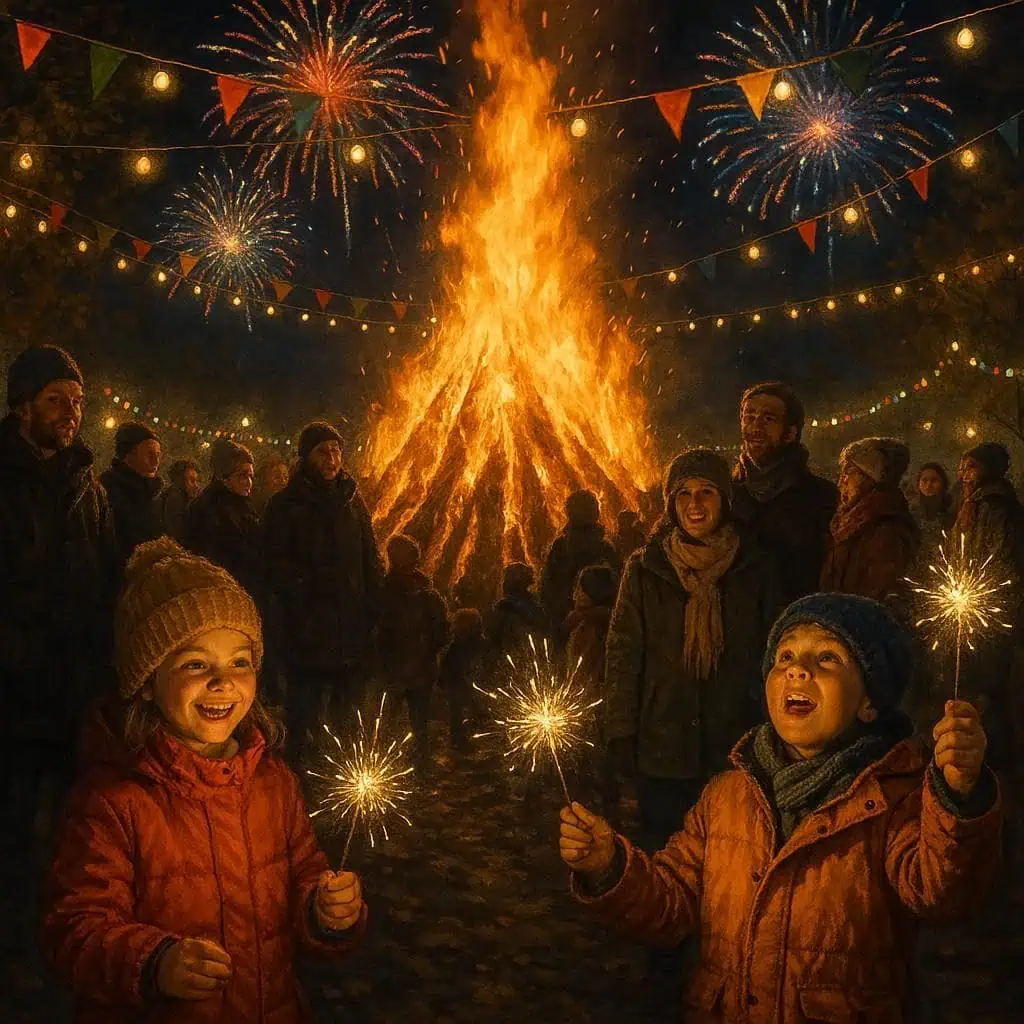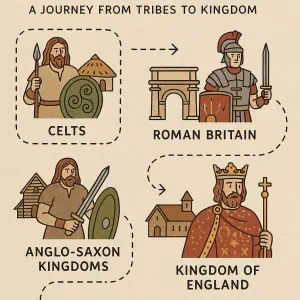Throughout history, fire has been more than warmth or light — it has been a symbol of faith, power, and community. In the Middle Ages, bonfires were lit for both sacred and social reasons: to celebrate holy days, mark the changing seasons, or drive away evil spirits. Centuries later, the tradition of communal fire would evolve into Bonfire Night, celebrated every year on November 5th.

🌿 Medieval Bonfires: Faith and Fire
In medieval Europe, bonfires were closely tied to religious festivals. Fires blazed on All Hallows’ Eve, Midsummer’s Eve, and other feast days to purify, protect, and bring people together. These great fires were often lit on hilltops or in village centers so that the whole community could share in their light.
The flame was believed to ward off dark spirits that roamed the earth as the seasons turned. Villagers might jump through the fire for good luck or use its ashes to bless their crops. Bonfires represented a spiritual connection — the line between protection and celebration.
🏮 Did You Know?
In medieval Europe, bonfires weren’t just for warmth — they were sacred symbols of protection. People believed that the light and smoke would ward off evil spirits during festivals such as All Hallows’ Eve and Midsummer’s Eve.
🎇 The Birth of Bonfire Night
Fast forward to the year 1605, when England was shaken by the Gunpowder Plot — an attempt by Guy Fawkes and his fellow conspirators to blow up Parliament and kill King James I. The plot was foiled, and to celebrate the king’s safety, bonfires were lit across London.
This moment became an annual event: Bonfire Night or Guy Fawkes Night, marked by fireworks, effigies of “Guy,” and community gatherings around roaring fires. While the reason had changed from spiritual to political, the act of gathering around fire to mark an important event remained.
🔥 Old Traditions, New Meaning
The similarities between medieval bonfires and Bonfire Night are striking:
- Both use fire as a communal symbol of unity and protection.
- Both occur in autumn and early winter, when darkness falls early.
- Both mix fear and festivity — warding off danger while celebrating life.
What changed was the purpose: medieval fires honored God or nature’s cycles; Bonfire Night celebrated a king’s survival and national loyalty. Yet the core idea — that fire brings people together — stayed the same.
🎆 Did You Know?
The first Bonfire Night was celebrated on November 5th, 1605, the very night the Gunpowder Plot was foiled. People lit fires across London to celebrate the safety of King James I.
🕯️ Legacy of Light
Today’s Bonfire Night still carries echoes of its medieval roots. Though fireworks have replaced the flickering torches of old, the sight of a blazing bonfire on a cold November night remains timeless. It reminds us of a world where light and warmth were precious, and where fire symbolized the victory of safety and faith over fear and darkness.
🔥 Frequently Asked Questions: Medieval Bonfires & Bonfire Night
What were medieval bonfires used for?
They were lit during religious festivals to protect against evil spirits, celebrate holy days, and bring communities together.
How did Bonfire Night begin?
It began in 1605 after the failed Gunpowder Plot, when Guy Fawkes and others attempted to blow up Parliament. People lit fires to celebrate the king’s safety.
Are Bonfire Night and medieval bonfires connected?
Yes — both traditions center on communal fire as protection and celebration, even though the meanings changed over time.
Why was fire considered protective in medieval times?
Fire was believed to purify and drive away dark forces, especially during liminal times like Halloween or the changing of seasons.
🎇 Quiz: From Medieval Bonfires to Bonfire Night
📚 Glossary: Medieval Bonfires & Bonfire Night
Bonfire Night
Annual event on November 5th commemorating the failure of the 1605 Gunpowder Plot.
Medieval Bonfire
A sacred or communal fire used in festivals for protection, purification, and celebration.
Guy Fawkes
One of the conspirators in the Gunpowder Plot, now symbolized in Bonfire Night effigies.
All Hallows’ Eve
The medieval night before All Saints’ Day, marked by fires to ward off spirits — the root of Halloween.
Gunpowder Plot
A failed attempt in 1605 to blow up the English Parliament and assassinate King James I.






